Steve Jobs… was complicated.
He was to some people a genius, but to others he was a jerk.
He was an anti-materialistic hippie, but he also created Apple—a 2-TRILLION DOLLAR MEGA CORPORATION that sells shiny consumer products with incredible profit margins.
He dropped out of a liberal arts college, but then he helped revolutionize the computer industry, the music industry, the phone industry AND the movie industry. That’s crazy!
In this exciting summary of the official biography of Steve Jobs, we’ll learn about his way of working, thinking and making decisions. A key part of his youth was a deep interest in Zen Buddhism, Indian mysticism and the psychedelic LSD—they may have planted the seeds for his personal ability to “think different” and create businesses that changed the world.
About the Author
Walter Isaacson is a journalist and writer. He was the editor of Time Magazine, the CEO of CNN, and is now Professor of History at Tulane University. He’s written biographies about other important people like Einstein, Da Vinci, and Benjamin Franklin (our summary). For this book, Isaacson personally interviewed Steve Jobs over 40 times in the years before his death.
🧘 1. Chase Your Curiosity: Steve Jobs pursued his interests in tech and spirituality with great intensity
Most of us are curious about Steve Jobs because we want to know: How was he able to make such a big impact on the world? Hidden inside that question is a desire to learn from him so we can make a bigger impact ourselves. Well, after reading all 600+ pages of this huge biography…. I can say the biggest thing that separated Steve Jobs from other young people is that he chased his interests with incredibly intense focus.
First, Steve Jobs was interested in electronics. As a boy, he was incredibly lucky to be adopted by parents living in California’s Silicon Valley, a place that was basically the center of computer innovation. Living in this area made it easier for Steve Jobs to meet like-minded people. He met many neighbours that were engineers, he joined a club for young people run by the company HP, and he found a summer job working at an electronics parts store.
Most importantly, through a mutual friend he met Steve Wozniak, a slightly older boy who was incredibly talented at designing electronics. In 1971, Steve Jobs and Steve Wozniak both saw a magazine article that explained how hackers were building ‘Blue Boxes’ that allowed people to make long-distance phone calls for free. Well, the two Steves became very excited by this. Wozniak went to a university library and figured out how to engineer their own Blue Box. Then Jobs packaged it and sold more than 100 boxes to students in university dorm rooms.
This pattern would continue for years into their future, after they became co-founders of Apple: Wozniak was the brilliant engineer, Jobs was the brilliant businessman.
The second big thing Steve Jobs was interested in was the hippie counterculture. He graduated high school and went to a liberal arts college up north in Oregon.He became very interested in eastern spirituality, especially Zen Buddhism, which would probably inspire his future love of simple and clean design. Jobs made friends with other hippie kids like Daniel Kottke, chanted at the local Hare Krishna temple, and worked at an organic apple farm. He also took the psychedelic drug LSD, later calling it one of the top 3 most important events in his life.
During that time, some books that influenced him deeply included:
- Be Here Now by Ram Dass — Jobs said it was “profound” and transformational.
- Autobiography of a Yogi by Yogananda (Inc.com) — He read this one annually for most of his life.
- Diet for a Small Planet by Lappé — Got him interested in unusual vegan diets, fasting without food, etc.
Jobs famously dropped out of college, after just a few months. He felt that he was wasting all his parent’s money, but he stayed at the college for another year and took specific courses. In a speech later in his life, Jobs said:
It was pretty scary at the time, but looking back it was one of the best decisions I ever made. The minute I dropped out I could stop taking the required classes that didn’t interest me, and begin dropping in on the ones that looked interesting.
Notice how in that short quote Jobs mentioned both the words “interesting” and “interest”. That really sums up the first big lesson of this biography: Jobs was always following his interests and curiosity, exploring to the limits, to see what he might discover. For example, how many people would have read that magazine article about the Blue Boxes and then forgot about it the next day? The two Steves didn’t just read the article, they got excited and actually created their own Blue Boxes. Maybe that is what successful people mean by that tired old cliché: “Follow your passion”? Maybe it’s not just about feelings, but following our feelings with actions…
Today, many people would say Elon Musk is really similar to Steve Jobs. He’s changing whole industries with his electric cars and inexpensive space rockets. Maybe their similarity begins with having a more intense interest in things than most of us. In the most popular biography of Elon Musk, his old university mate Navaid Farooq said, “When Elon gets into something, he develops just this different level of interest in it than other people. That is what differentiates Elon from the rest of humanity.”
Young Steve Jobs pursued his interests with more intense focus than most people. He loved electronics, so he met like-minded geeks like Steve Wozniak. Together, they sold a simple Blue Box gadget that allowed free long-distance phone calls. He also loved spirituality, so he dove deeply into Zen, meditation, vegan diets, fasting and psychedelics.
🍎 2. Do What You Believe In: Jobs wanted to build products that were superior and a company that lasted
So, how did a hippie college dropout become such an important figure in the computer industry?
First, Jobs returned to his parent’s house in California. He opened the newspaper, looked in the classified ads, and found a job in a small video game company called Atari. Without any real qualifications or degree, the manager hired Jobs as a technician because he seemed smart and enthusiastic about technology. (But soon the other employees were complaining about his rude attitude and smell—in those days he didn’t believe in showering often or wearing shoes!)
Around the same time in 1975, a new Homebrew Computer Club was organized for technology hobbyists. Steve Jobs and Steve Wozniak began going to meetings. They were very excited by the first personal computers being shown there, even though the early machines were very basic, like a wooden box with some lights and switches on the front.
This led to the first series of Apple computers:
- The Apple I — Their first computer was mostly about the circuitboard, which Wozniak designed during the evenings and weekends because during the day he was working for HP. They chose “Apple” as a company name because it sounded friendly. They sold a few circuitboards to Homebrew Club members and friends. But their big breakthrough was when a local computer store owner bought 50 units for $500 each. To finish that big order, Jobs set up a crude assembly line in the garage of his parent’s house.
- The Apple II — The two Steves found an investor named Mike Markkula to give them $250,000. Then they hired a dozen employees and moved into a small office. Their second computer design was far more polished on the outside, with a molded plastic case, a built-in keyboard, and more powerful components. The Apple II was launched in 1977 at a Computer Faire, where it received 300 preorders. It would eventually sell over 6 million units and play a big role in popularizing personal computers.
- The Apple III — It was launched in 1980 and it was a complete failure, surprising everyone at Apple. They had aimed for the business market, but the computer was unreliable and overpriced compared to competitors like IBM. Despite the failure, that year Apple became a publicly traded company and Steve Jobs, who was just 25 years old, was suddenly worth $256 million!
Their first investor Mike Markkula is almost unknown compared to Steve Jobs, but Apple wouldn’t exist without him. He was a retired Intel engineer, he owned 1/3 of Apple, and he would later be the CEO and chairman of the company. He deeply influenced how Steve Jobs’ saw business. For example, Jobs said Markkula taught him not to start a company for money but for “making something you believe in and making a company that will last.”
Jobs and Wozniak went to a Homebrew Computer Club, where they had the idea to sell their own computer circuitboards under the name Apple I. Then they found an investor Mike Markkula to fund the creation of a much more polished computer called the Apple II. It sold over 6 million units and helped personal computers reach mainstream consumers. They tried making each new product better than the last.
🎨 3. Great Artists Steal: The original ideas behind the revolutionary MacOS were invented at Xerox
Back in those days, the only way to use a computer was using a text-based interface (HowToGeek.com). Like if you wanted to do anything, then you would need to type out a long command with green text on a black background. You couldn’t even click around with a mouse—in fact, mice didn’t really exist. This is probably difficult to imagine for younger people who are used to modern touchscreen devices!
The first computers using a graphical user interface (GUI) were made in a small research center called Xerox PARC. Yup, that’s the Xerox company known for making printers.
Well, in 1979 Xerox management wanted to invest $1 million dollars into Apple. As part of the deal, Steve Jobs made them agree to share all of their secret computer research, because people had told him great discoveries were being made there. It turned out to be a great deal for Apple, because what they learned in 3 days at the center would become the foundation for their next operating system.
Steve Jobs would sometimes quote the legendary artist Picasso who said, “Good artists copy, great artists steal.” However, Apple engineers deserve a lot of credit for executing the idea of a graphical user interface very well. They added many of their own improvements like resizable windows, drag-and-drop icons, and an inexpensive mouse.
In 1983, the Apple Lisa was their first computer to ship with the new visual operating system. Compared to the flickering green text of the past, it was beautiful, intuitive and easy to use. But in sales it was a failure, partly because it cost about $10,000 (which is over $25,000 in today’s money). It also didn’t help that Jobs was already talking to reporters about an upcoming Apple computer that would be cheaper and better.
Around that time, a major competitor had suddenly appeared for Apple. That year, twice as many IBM-compatible computers were being sold as Apple computers. Then more bad news. A little software company named Microsoft, led by Bill Gates, announced they would be making their own visual OS named Windows. When Jobs heard about this, he had a yelling tantrum and accused Microsoft of stealing their ideas… which is a little funny when you remember his proud quote about stealing from before.
In 1983, the Apple Lisa was the first commercial computer with a graphical user interface (GUI). It was a big improvement over text-based interfaces of the past, but sold poorly due to price. The research center Xerox PARC invented the GUI, but Apple executed it very well, and later Microsoft would bring the same concept to IBM PCs, which had begun dominating the market.
✨ 4. Strive for Simplicity: Jobs used intuition to make products as easy to use as possible
Right now, I’m typing this on a 5-year-old MacBook Pro. In all those years, it’s been working perfectly. I love it. Many people love Apple products for their high quality, beautiful design, and ease of use. This seems to be a direct result of Steve Jobs’ intense passion for his products.
But that intensity may also be why his past employees have such mixed feelings about him. Jobs always believed it was his duty as the leader to impose high standards, by not tolerating “b-players” and “bozos.” (A couple of his preferred words.)
When designing a new product, Jobs had a clear goal of how the end design should feel. He always wanted to make things obvious to use and remove anything unnecessary. His goal was simplicity over clutter. One reason behind this must have been his devotion to Zen Buddhism, he adored the minimalistic Zen gardens in Japan.In one of Apple’s first marketing brochures, there was a quote that describes his design approach perfectly: “Simplicity is the ultimate sophistication.”
For example:
- MacOS — Steve Jobs was closely involved with the look of Apple’s first graphical operating system, stopping by every day to offer feedback on the icons, fonts, etc. He was a big perfectionist, making the team redo small details dozens of times until he was satisfied.
- Macintosh — Steve Jobs gradually took over a side project at Apple called Macintosh, meant to be a smaller and cheaper computer. It ended up being a much more portable, attractive and friendly-looking computer than the Lisa. Jobs insisted on removing the cooling fan found in most other computers, feeling it was too noisy and distracting.
- iPod — Years in the future, Jobs would continue to eliminate anything unnecessary from products. In the first iPod music player, he removed the on/off switch, a move that dumbfounded the other engineers at Apple. He also insisted iPod users should be able to do everything in 3 button presses or less. Later, Jobs was also the one to suggest creating an ultra-simple iPod without any screen, which became the iPod Shuffle.
Steve Jobs became famous for making bold design decisions, often seen as brilliant, but sometimes controversial. To make those decisions, he needed clarity about how the end user should feel using the product, which made him push his team to keep refining a design until it felt right. In one Apple retreat Jobs dismissed a suggestion about market research saying that: “customers don’t know what they want until we’ve shown them.”
Today, entrepreneurs are often taught to create a really basic product and then improve it gradually over time. But Peter Thiel, a famous startup investor and billionaire, strongly criticizes that approach. He argues that entrepreneurs need bold, well-defined plans like Apple to create a great new product or business.
Here’s a quote from Thiel: “Forget ‘minimum viable products’—ever since he started Apple in 1976, Jobs saw that you can change the world through careful planning, not by listening to focus group feedback or copying others’ successes.” For example, if Steve Jobs had started with an old-fashioned cell phone and tried to improve it a bit, then he would never have created the iPhone.
Sony was a company that Steve Jobs really admired and they often had a similar approach to creating products. The CEO of Sony, Akio Morita, saw that his friend was carrying around a heavy audio recorder to listen to music. So he told his engineers to make a very small and lightweight device to play music tapes. People around him said it would never sell because it couldn’t record audio, but the Sony Walkman went on to be a huge success, selling over 200 million units. No market research or customer surveys required. Morita later said, “The public does not know what is possible, but we do.”
Steve Jobs always pushed his teams to make products more simple and easy to use. He did it by removing anything unnecessary, even on/off switches and cooling fans. With all Apple products, Jobs had a clear feeling that he was aiming for, and kept refining the design until it felt right.
📢 5. Lead With a Mission: Jobs connected products to a larger identity or movement
Steve Jobs was an effective leader because he connected his company Apple to larger missions and movements. That’s one reason Jobs inspired a lot of devotion from his employees, despite his abrasive personality. People felt they were part of an important revolution in the computer industry, then the music industry, then the phone industry.
Steve Jobs was also a brilliant marketer because he spoke not just about product benefits, but about the desired identity of his target customer. Most people didn’t care about buying a computer with 5 gigahertz or 8 megaflops or whatever. They wanted to buy something that made them feel personally creative or “different” from the norm.
Here are 3 quick examples:
- Hiring Sculley as CEO — In 1983, Apple was looking for a new CEO, someone who had great marketing skills. Steve Jobs wanted to hire John Sculley. Sculley was then President of Pepsi and had created the ultra-successful “Pepsi Challenge” campaign. But he seemed reluctant to join a relatively small computer maker, until Steve Jobs poked his pride by saying, “Do you want to spend the rest of your life selling sugared water, or do you want a chance to change the world?”
- Launching the Macintosh — In 1984, when the Macintosh was launched, Jobs decided to position IBM as the enemy. Taking inspiration from the book “1984” about an evil tyrannical government, he branded IBM as an evil huge corporation that would cause computer innovation to stop. Therefore, buying an Apple computer meant you were a rebellious individual fighting an evil power. And it seemed to work. Based on the idea, their ad agency Chiat/Day created an ad that became a viral hit and won a bunch of awards.
- Marketing the Apple brand — Many years later in 1997, Steve Jobs worked with the same ad agency to create a marketing campaign known as “Think Different.” There would be no products or benefits in these ads, just faces of heroic famous people that Jobs wanted to connect to Apple’s brand. He chose people like Einstein, Gandhi, John Lennon, etc. For a television commercial, Jobs helped to write an inspirational voice over that became famous…
Here’s to the crazy ones. The misfits. The rebels. The troublemakers. The round pegs in the square holes. The ones who see things differently. […] And while some may see them as the crazy ones, we see genius. Because the people who are crazy enough to think they can change the world are the ones who do.
Leadership and marketing gain power when they connect a product to an inspiriting identity or larger movement. Jobs convinced Sculley to be Apple’s next CEO by challenging him to “change the world.” He launched the Macintosh not as a computer, but as an opportunity to fight ‘the system’ and later Apple was positioned as the brand for those who “think different.”
🌀 6. Distort Reality: He often made the impossible happen by ignoring whatever didn’t fit his vision
As a business leader, Steve Jobs had powerful charisma and seemed to be able to convince people of almost anything. One Apple employee named Bud Tribble began calling this a “reality distortion field.” (Wiki) It was almost like Jobs could temporarily distort reality for the people listening to him. Like he would get some engineers excited about a new computer feature, but when he left the room the effect of his charisma wore off and they suddenly realized the idea was crazy.
The “reality distortion field” of Steve Jobs was a unique advantage for him as a leader, according to people like Wozniak, because it pushed his team members to achieve the impossible.
Like if an engineer told Jobs that something was impossible, he would tell them to do it anyway. Surprisingly often, they would find a way to do the impossible. For example, one time Steve Wozniak was given an ‘impossible’ deadline to design a circuitboard for Atari in just 4 days, and he did it.
But there was also a large dark side to this part of Steve’s personality:
- Avoiding responsibility as a father — In 1978, Jobs got his former girlfriend pregnant. He seemed to refuse to face the situation. His ability to distort reality meant he could easily ignore facts that were inconvenient. It was only one year later that he took a paternity test and began paying child support for his daughter Lisa.
- Indulging perfectionism at Apple — In 1984, the Macintosh computer launch appeared to be a success, so Jobs was given greater responsibilities at Apple. But soon he was ignoring the pragmatic realities of business and indulging his impulses for perfectionism. Like he would paint and repaint machines in their factories that no customer would ever see.
After a few months, Macintosh sales dropped. Apple’s CEO John Sculley wanted Jobs to step down as head of the computer division. But Jobs blamed the failure on Sculley setting the price too high. This conflict led to escalating disagreements. By 1985, Steve Jobs was essentially forced out of working at Apple, the company he founded, which was obviously “devastating” for him.
- Refusing compromise at NeXT — Being only 30 years old, Jobs founded a new company called NeXT, that would focus on making powerful computers built for universities and academics. With $100 million of wealth from his Apple stock, Jobs again indulged perfectionism. Remodelling offices and factories for no practical reason. The first computer NeXT made was shaped like a perfect black cube, making it a lot more expensive to manufacture. His desire to create the best possible product, combined with a refusal to make realistic compromises, led to a computer that simply didn’t sell at the high price tag of $6,500.
However, it’s not all doom and gloom. During his years outside of Apple, Jobs also bought a small computer graphics division from George Lucas, founding a new company under the name of Pixar. In the beginning, Pixar made 3d graphics computers that cost tens of thousands of dollars, but it didn’t make much money. They also made some short animated films, under the encouragement of Steve Jobs. Despite the business not doing well, Steve Jobs continued to “ignore reality” and invest millions of dollars because he saw promise in the technology.
Then in 1988, one of Pixar’s short films called Tin Toy suddenly won an Academy Award. A couple years later, they signed a big deal with Disney to make 5 full-length computer animated movies. The first movie, Toy Story, was a huge hit at the box office. So was the next one… and the next one… and the next one. In 2003, their movie Finding Nemo became the top grossing animated movie ever.
So that is how, in a stunning turn of events, Steve Jobs also happened to revolutionize the entirely separate industry of animated movies. I am sure he couldn’t have done this if he was a more “realistic thinker”!
In 2006, Disney bought Pixar for $7.4 billion. Disney’s CEO at the time was Bob Iger, who describes in his autobiography the incredibly creative culture that he witnessed at Pixar. Much of that culture was thanks to Steve Jobs, who had even carefully designed the Pixar headquarters building so employees would always be running into each other and having spontaneous creative conversations.
Steve Jobs was said to have a “reality distortion field” that allowed him to ignore inconvenient facts and push employees to do their best work. Many of his big successes at Apple and Pixar came from this ability to motivate others in a charismatic way. But many of his personal flaws and failures also came from this tendency to ignore the reality that products needed to be practical.
🖥️ 7. Make Great Products: Jobs restored Apple by eliminating waste and making exciting new tech
11 years later, Steve Jobs returned to Apple in the most surprising way. You see, his own startup NeXT eventually gave up making hardware to focus on developing a software called NeXTSTEP. Then Apple’s computer market share collapsed to 4% when Windows 95 was released. So in 1996, Apple needed to respond with a better operating system based on a technology called UNIX. It turns out that NeXT was one of the few companies with expertise in that kind of software, so Apple ended up buying the company for $400 million.
Steve Jobs returned to Apple as an ‘advisor’, but was soon acting like a CEO, taking control to make the company profitable again. Above all, Jobs wanted people “motivated to make great products.”
Some of the dramatic changes Jobs made at Apple included:
- Cutting unnecessary costs. Jobs asked almost the entire Apple corporate board to resign. That would give the company a fresh start. Then he laid off 3,000 people. He improved Apple’s efficiency in manufacturing, cutting inventory that was just sitting on shelves and wasting money. These changes made a big difference and basically saved Apple. They went from losing $1 billion in 1997 to earning $300 million profit in 1998.
- Removing 70% of products. Apple’s product line had become bloated and confusing, with dozens of indistinguishable models. At one meeting, Steve Jobs gave Apple a new simple product strategy—They would make just 4 computers! Two for professionals and two for consumers. The business managers who had been pushing for more and more products were dumbfounded.
- Emphasizing design again. Jobs began working closely with Apple’s head of design, Jony Ive. Together they made a fresh new look for a consumer computer. The iMac had a colourful, translucent outer case and was simply different from the beige boxes of most other computer makers. It became Apple’s fastest-selling computer ever. Later they would launch the iBook laptop that looked like an orange seashell, the Power Mac G4 that looked like a floating cube, and the next iMac G4 with a separated flat panel display inspired by sunflowers.
11 years later, Apple bought NeXT for their software expertise, which meant the return of Steve Jobs. He made Apple profitable again through big changes like replacing the corporate board, cutting 70% of products, firing 3,000 employees and streamlining operations. Then he launched a new era of design-focused computers starting with the colourful iMac.
📱 8. Change Things: He actively reinvented Apple with products like iPod, iTunes and iPhone
Steve Jobs believed that great companies often became mediocre because they won a monopoly and stopped trying to make better products. Instead, salespeople took over to squeeze extra profits out of past wins. He saw this happened at Apple with John Sculley and at Microsoft with Steve Ballmer.
Over the next 10 years, Jobs did his best to avoid that at Apple by expanding the company into brand new industries. Eventually, it even made sense for them to change the name from Apple Computers Inc. to just Apple Inc.
Some key moments included:
- iPod in 2001. While designing the iTunes music software for the Macintosh, Jobs noticed that most digital music players sucked. At the same time, he was also thinking the future of the Macintosh was to act as a “digital hub” for a bunch of other digital devices. So Apple launched the iPod, a music player with a minimal and iconic design. Their sales pitch of “1,000 songs in your pocket” was very effective, and they converted many people who’d been using CD players.
- iTunes Store in 2003. At that time, online music piracy was exploding and the music companies didn’t have any good solutions because they didn’t understand technology. Steve Jobs imagined a store built into their iTunes software that would allow iPod owners to easily buy music. He somehow convinced all the major music labels to put their music on this digital store and it was a major success, selling over 70 million songs in the first year alone.
- iPhone in 2007. The iPod was selling over 20 million units per year, but Jobs saw a future threat coming from smartphones, which had already hurt the digital camera market. Apple needed to make their own phone that could play music, or someone else would do it and destroy their sales. The iPhone was a radical new design with almost the entire front being a touchscreen. During the launch, Jobs sold the iPhone as “three products in one,” one of those products being a music player. In fact, the music app was actually called “iPod”! Most CEOs would probably be terrified to release a new product that competed so directly with their biggest money maker, but Jobs saw it as a necessity.
Jeff Bezos, the founder of Amazon, had to learn the hard way to actively reinvent his business. Those of us who are old enough will remember a time when Amazon.com only sold paper books, then music CDs and movie DVDs. Well,according to the book The Everything Store, when Apple launched the iTunes store, then Amazon’s music CD business suddenly collapsed, shocking Amazon’s top leaders.
Bezos realized that Amazon needed to dominate the ebook market before someone else did, like Apple or Microsoft. He explicitly wanted the Kindle to be as easy to use as an Apple product, so that even a grandmother could buy ebooks right on the device. Looking back, it’s easy for us to see the Kindle as a great move for Amazon, but we have to remember that it actually threatened to disrupt their biggest money maker of paper books. In fact, both Jobs and Bezos mention the book “The Innovator’s Dilemma” being a large influence for these important business moves.
Jobs knew that for Apple to last, it needed to be a company that constantly reinvented itself. So he moved them into new industries, from just selling computers to selling music, phones, apps and online services. Sometimes that required painfully sacrificing past success, like when iPhone largely replaced iPod sales.
⏳ 9. Face Death: Being diagnosed with cancer gave Jobs clarity about his life purpose
In 2003, Steve Jobs was receiving a routine medical kidney scan, when doctors suddenly found a cancerous tumour in his pancreas. He waited 9 months to finally have the necessary operation because he preferred to try natural remedies first.
In public, Jobs put on a confident front, but privately he struggled to regain strength after the surgery and chemotherapy. A few years later in 2008, the cancer came back even stronger. He needed to take another leave of absence and received a liver transplant. Though sick, he would still become passionate and energized talking about Apple and their next products. In late 2010, the cancer came back again. He became very weak and lost 50 pounds, finally resigning from Apple. He died in October 2011 surrounded by loving family.
After his first diagnosis with cancer, Steve Jobs gave a commencement speech at Stanford that became famous. Here’s an especially good quote:
Remembering that I’ll be dead soon is the most important tool I’ve ever encountered to help me make the big choices in life. Because almost everything—all external expectations, all pride, all fear of embarrassment or failure—these things just fall away in the face of death, leaving only what is truly important. Remembering that you are going to die is the best way I know to avoid the trap of thinking you have something to lose. You are already naked. There is no reason not to follow your heart.
In ancient Rome, there was a school of philosophy known as Stoicism. They said that we should always remember death because that will help us to have the right perspective in life. For example, the Stoic philosopher Marcus Aurelius would often remind himself of his mortality, and he found this was the best cure to worrying about his reputation, health or safety. Like he would literally write in his journal “Soon you’ll be ashes, or bones.”
Jobs was first diagnosed with cancer in 2003 and he died from it in 2011. In a speech, he said that remembering death was the best way for us to understand what is important, make big life choices and become free of our fears and limitations.
- Go deeper with an interest. Choose something that captures your attention, then really dive into understanding it better than 99% of people. Just like Steve Jobs went to nerdy computer clubs, met like-minded people, and came up with project ideas to stretch his skills. Specifically: Make a list of 3 books you could read, 3 experts you could email, and/or 3 projects you could create related to your interest.
- Execute better than an existing product. In the life of Jobs, having a new original idea was less important than executing it really well, like he did with MacOS, iPod and iPhone. For example, if you wanted to launch a successful Youtube channel, then you could look for one that is already popular despite being sloppy or amateur, then make something similar but much better.
- Focus on just 3 big annual goals. At Apple’s company retreats, Jobs would have everybody work together to make a top 10 list of annual goals for Apple. Then he would cross out the bottom 7, saying they could only work on the top 3 goals that year. We can do a similar exercise for out personal lives. Having just 3 goals concentrates our energy on what is most important.

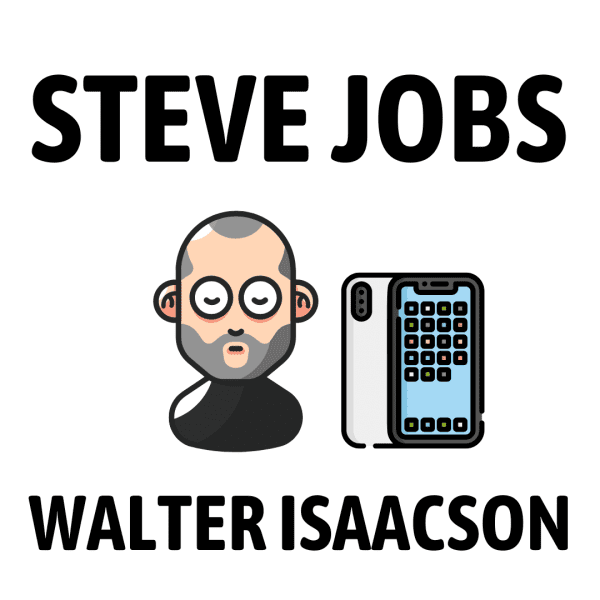
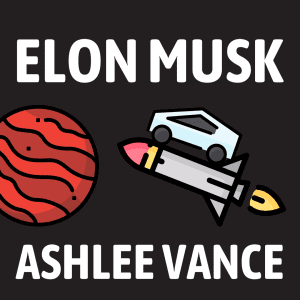

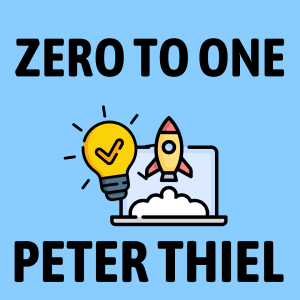

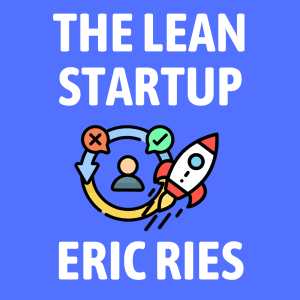

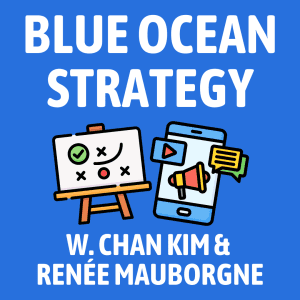

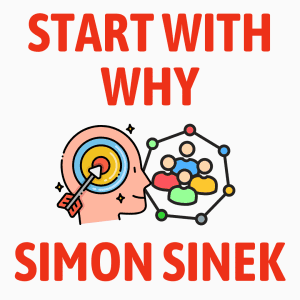
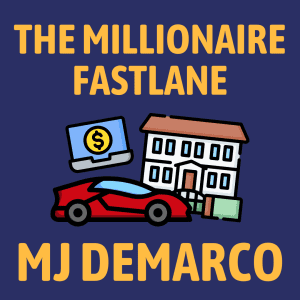
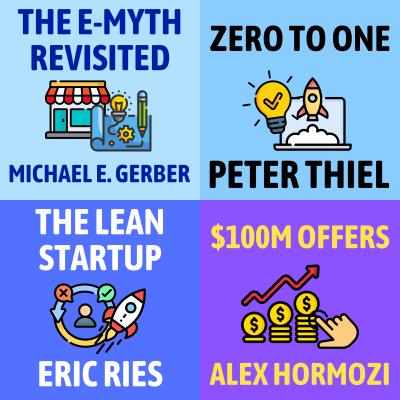
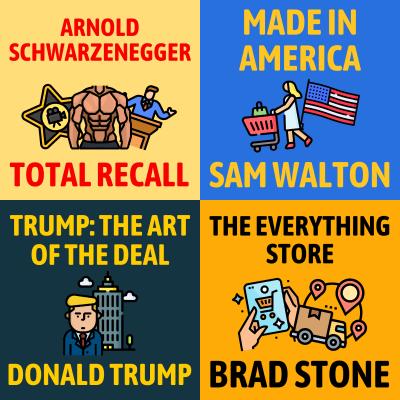
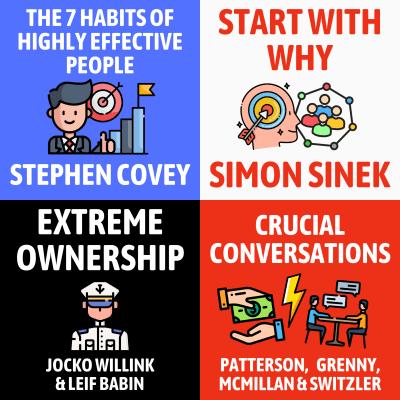
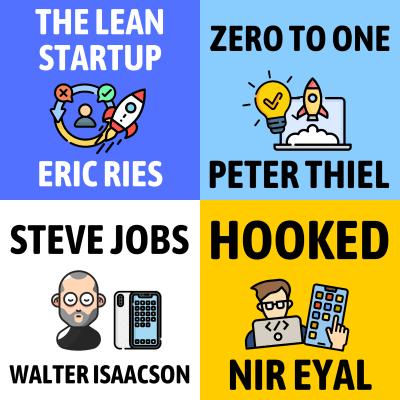

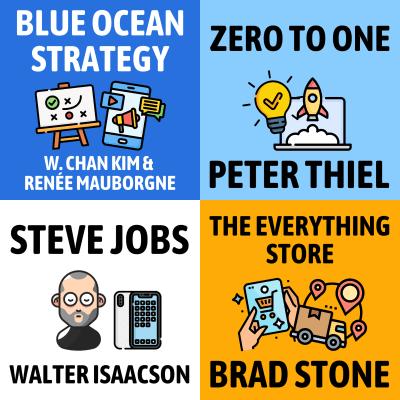





Community Notes